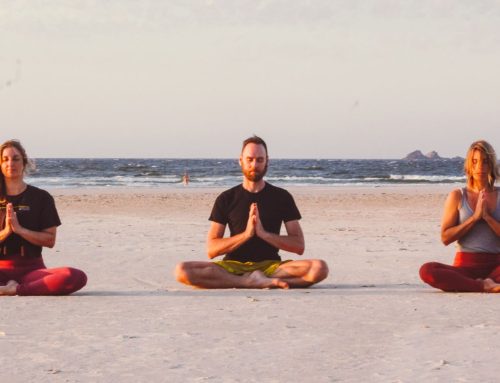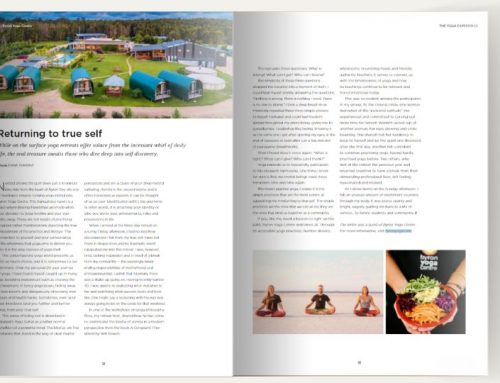Almost every New Year’s resolution begins with two powerful words: “I will.” We summon our willpower and pledge to change not just what we do, but who we are. We imagine how life will improve once we achieve these goals. Yet, every January, so many of these resolutions fall away as life’s rhythm overtakes our initial intentions. Why is this so common?
If there’s one thing yoga teaches us, it’s the difference between “I will” and “the greater will.” While “I will” is about pushing toward something we think we need, “the greater will” speaks to a broader perspective, recognising that perhaps our deepest needs are not always what we might think. Many New Year’s resolutions spring from desires shaped by ego and conditioning. These can falter because they often assume we aren’t “good enough” as we are, reinforcing the idea that happiness lies in achieving what we want.
The yoga tradition offers a refreshing alternative: sankalpa, or resolve. Unlike a resolution that is born from external desires, sankalpa arises from the wisdom within, embracing the inner clarity of who we truly are. Here’s how adopting the practice of sankalpa over a traditional resolution can support your journey toward fulfillment.
1. Reflect on Your Why
Take time to sit with your intention. Why do you want this change? Is it for external validation, or does it arise from a deeper yearning? For example, rather than setting a goal to “exercise more,” connect with why that matters to you. Perhaps it’s for greater vitality, improved mental clarity, or a desire to feel connected with your body. Yoga calls this intention a sankalpa—a resolve that comes from your inner truth rather than a sense of lack.
2. Set a Heartfelt Intention
A sankalpa isn’t necessarily about adding more to your life; it may be about enhancing what already exists. It’s a declaration of the qualities you’d like to cultivate, whether it’s peace, health, or self-acceptance. This heartfelt intention shapes your daily choices, supporting long-term growth rather than instant results.
3. Break Goals Down into Daily Practices
Unlike broad resolutions, a sankalpa involves grounding our intention in daily practices. If you’re looking to enhance your health, begin with small steps: perhaps starting your day with a nourishing meal, a short walk, or a mindful breathing practice. These small, sustainable actions contribute to a gradual but meaningful transformation, rather than relying solely on willpower.
4. Embrace Progress, Not Perfection
One of the main reasons resolutions fail is that we expect instant success. Sankalpa invites us to be patient and gentle with ourselves. Change is gradual, and setbacks are part of the journey. Allow each small step forward to be enough. The purpose is not to force transformation but to be open to it as a process.
5. Tune into a Supportive Environment
A supportive environment is essential for cultivating any intention. Being surrounded by like-minded individuals can encourage and uplift your commitment. For instance, joining a New Year Renew and Revive Yoga Retreat allows you to reset with community, inspiring teachers, and peaceful surroundings. These spaces are specially designed to help you listen inwardly, align with your intentions, and return with a refreshed perspective.
6. Reconnect with Your Sankalpa Often
Resolutions can quickly become forgotten, but a sankalpa is something we revisit daily. The more you connect with your intention, the more it becomes woven into the fabric of your life. This alignment helps you bring purpose and clarity to every decision, staying close to the values that matter most.
Join Us on a Journey of Renewal
If you’re ready to approach this New Year differently, our New Year Renew and Revive Yoga Retreat can help you begin this journey with purpose and serenity. The retreat offers an opportunity to dive into mindfulness practices, yoga, and reflection, creating space to reconnect with your inner self. Through this approach, your resolve becomes a meaningful journey, not a destination.






